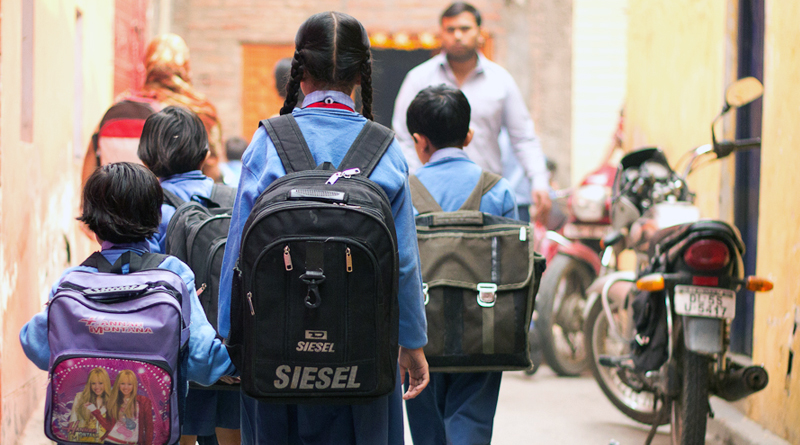Education happens to be the greatest creator and leveller of wealth
Wealth is more than real estate and financial assets. It is education, above all. The good news: the educational gap between the poor and rich is closing rapidly, levelling wealth across the globe as never before. Say boo to pessimists like Paul Krugman and Thomas Piketty.So says Surjit Bhalla’s latest book, The New Wealth of Nations. It combines solid empirical evidence and deep insights with some dubious assertions. But even critics will find it tough to contest his portrayal of rising education as a global force that is revolutionary, equalising and unstoppable.
Writing on the Wall
Jawaharlal Nehru’s Five-Year Plans viewed investment as all-important, with education being a goody-goody add-on. But economists Robert Solow and Gary Becker then demonstrated the importance of productivity, which, in turn, flowed from education and skills. This, they proved, mattered far more than investment or population.
Bhalla points out that conventional wealth (homes, bonds, shares) is valued by converting the income from such assets — rents, interest, dividends, capital gains — into a net present asset value, using certain discount rates. Similarly, incomes also flow from an asset called education, whose value can similarly be estimated.
Bhalla attempts to measure educational wealth across the world, a difficult exercise requiring heroic assumptions. He concludes that world educational wealth rose from $185 trillion in 2000 to $330 trillion in 2016. This exceeded world financial wealth for these two years — $111 trillion and $256 trillion respectively — as calculated by Credit Suisse.
The Gini coefficient percentage (a measure of inequality ranging from 0for complete equality to 100 for complete inequality) for world financial wealth is 89. For educational wealth, Bhalla calculates, it is 76. Both represent considerable inequality, but educational wealth is better distributed, and improving as poor countries catch up with the West.
Some analysts groan that the richest 1% own 50% of world financial wealth. Bhalla calculates that the richest 1% own only 17% of world educational wealth. The world is more equal than you might think.
Critics can contest Bhalla’s methodology and calculations. Access to the best schools and colleges, the most influential networks, the best infrastructure, the best social and policy climates, the most luck and the most money can matter far more for income than education.
Nevertheless, educational levels are strongly correlated with incomes across countries. Bhalla shows that the rise of the West from the 17th century was driven by the rise of education, spurring innovation and the industrial revolution, while the East remained mired in illiterate stagnation.
Bhalla calculates that in 1870, the world education Gini for years of schooling was a whopping 91.3, worse than any estimate of world income in history. But as education spread to developing countries, this Gini fell to 58 by 2000, to 46 by 2016, and will fall to 43 by 2030.
Industrious Revolution
Education and the Industrial Revolution in the West ended domination by the landed aristocracy and created a rising middle class. Education and skills are now creating a rising middle class in developing countries, especially China and India. College graduate numbers in emerging markets are correlated with the number of millionaires.
This has greatly reduced world income equality. That may surprise many. Income inequality has risen in the West and become a serious political issue. But as developing countries become well off, global inequality falls.
This is not just a Bhalla thesis. It is confirmed by economists Xavier Sala-i-Martin, François Bourguignon and Branko Milanovic. The World Bank’s latest Global Economic Prospects says rising education in the Third World has helped it grow much faster than the rich West, reducing income inequality. It estimates that the world income Gini has fallen from 69.7 in 1988 to 65.8 in 2013, and (assuming continuation of the Third World education wave) will fall further to 62.6 by 2030. This confirms that Bhalla is spot on.
The World Bank says the West’s income Gini has worsened from 29.8 in 1988 to 31.8 in 2013, causing much angst. Globalisation is, indeed, one reason. Outsourcing has pulled up poor countries and people, even while deepening wage stagnation in the West caused by automation.
Bhalla calculates that between 1980 and 2016, the income of the world’s poorest quintile (one-fifth) rose 193%, against 71% for top quintile and 86% for the richest 1%. These figures are based on purchasing power parity (PPP) data. In current dollars, between 2000 and 2016, the bottom quintile is up 176%, the top quintile 59%, and the richest 1% by 54%.
Bhalla makes calculations using data from Piketty’s own World Wealth and Income (WID) database! Yet, his picture of falling inequality is the very opposite of that painted by Piketty and others. Those gloomsters focus only on within-country inequality, ignoring global inequality.
In the last two centuries, the spread of skills created high wages in the West, while a reserve army of unskilled labour in the East kept wages low. Today, says Bhalla, the West has a reserve army of skilled labour that keeps wages stagnant, while the spread of skills is raising wages in the Third World. That trend is going to continue.


